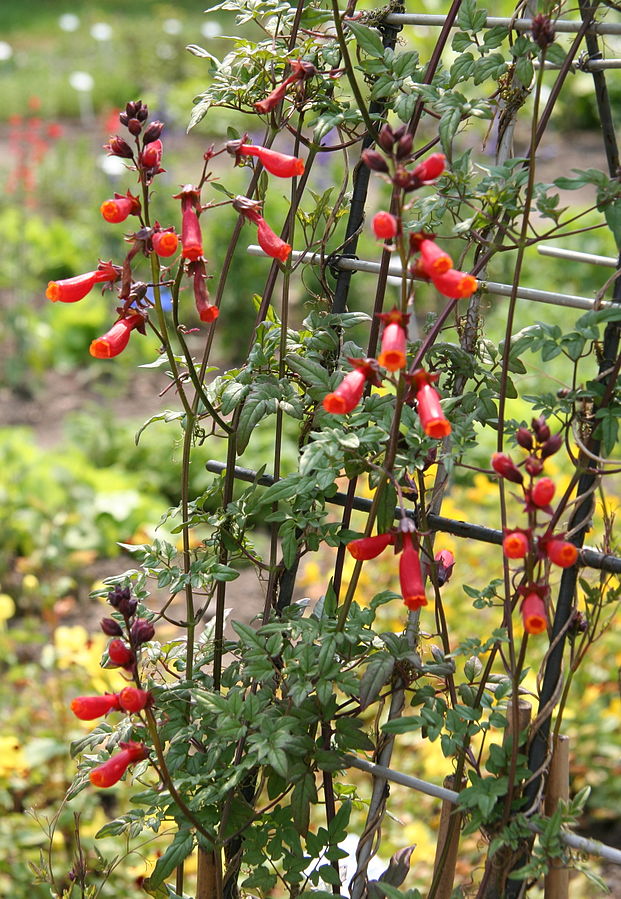
Also known as Chilean glory creeper, this half hardy perennial vine is native to the Chilean Andes and is a member of the trumpet vine family, Bignoniaceae, that also includes hardy gloxinia, catalpa, and sausage tree. The many branched vine grows 7-15′ long and has a woody base and alternate, pinnately compound leaves up to 3″ long with 3-7 leaflets on older stems, less on young ones. The leaves have prominent veins and may have a few hairs. Six inch long terminal racemes of orange to red tubular flowers appear from spring to fall. Each flower is 1-3″ long and gives way to an oval wrinkled capsule about an inch long and wide, containing winged black seeds. Cultivars are available with pink, yellow or scarlet flowers. The plants do well in pots but climb by tendrils so needs a support structure such as a trellis. In addition, they look well in the garden on a wall, fence or gazebo. The genus name, Eccremocarpus, is derived from the Greek words εκκρεμής (ekkremas) meaning hanging on, and kαρπός (karpos) meaning fruit, and refers to the hanging fruit capsules. The specific epithet, scaber, is the Latin word meaning rough.
Type: Half hardy perennial vine often grown as an annual
Bloom: Racemes of tubular orange to red flowers from spring to fall
Size: 7-15′ H
Light: Full sun; tolerates some shade but produces fewer flowers.
Soil: Fertile, consistently moist, well-drained
Hardiness: Zones 8-10
Care: Prune in early spring; deadhead to extend bloom time
Pests and Diseases: Generally healthy but susceptible to whiteflies and spider mites when grown indoors.
Propagation: Seed in spring, tip cuttings in fall
Companion Plants: Roses, clematis, poet’s jasmine
Outstanding Selections:
‘Aureus’ (yellow flowers)
‘Carmineus’ (red flowers)
‘Pink’ (pink flowers)
Photo Credit: Michael Wolf Wikimedia Commons